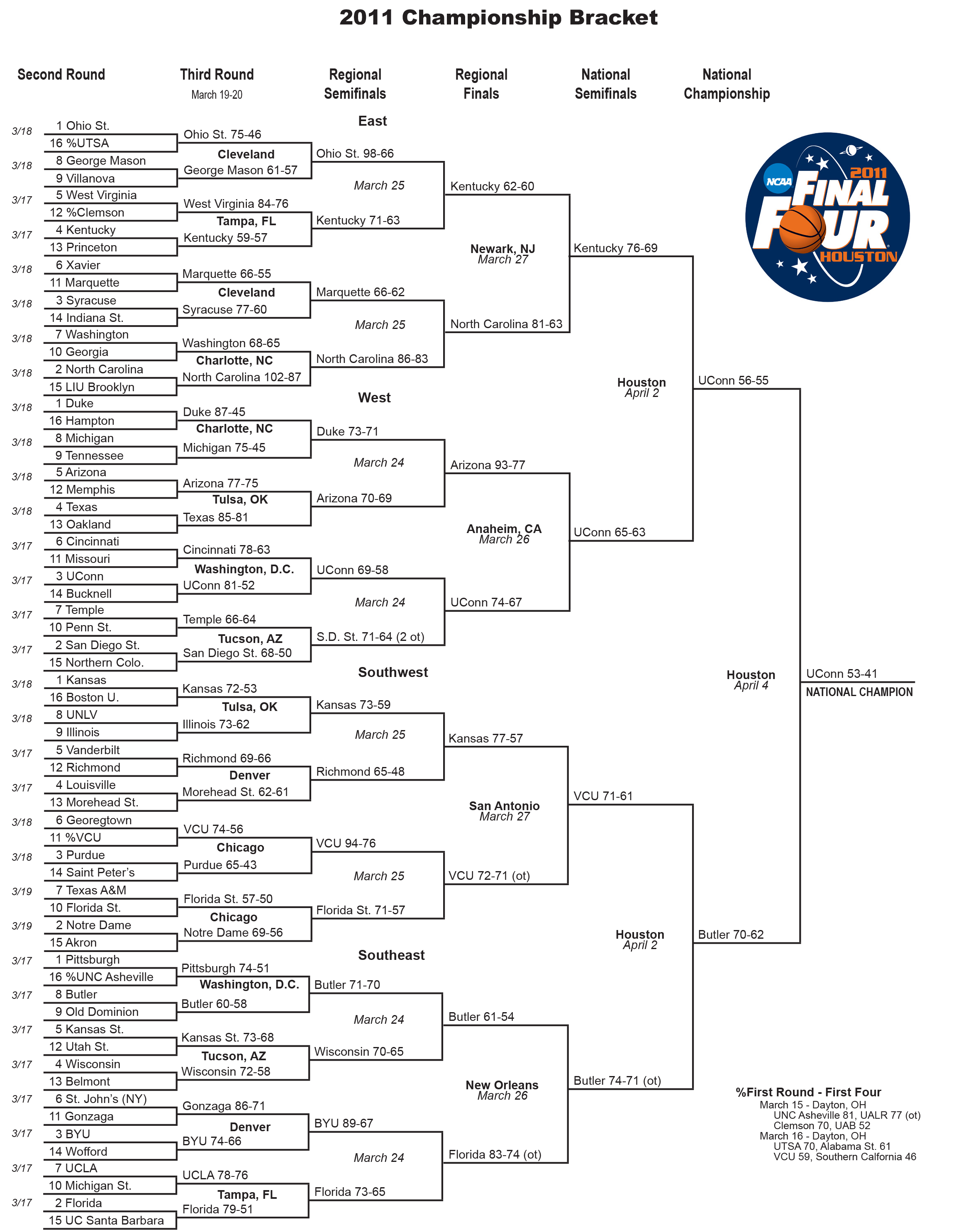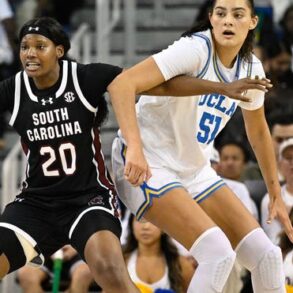The First Four is the official start to March Madness, with four games played earlier in the week before the Round of 64 in the NCAA men’s and women’s basketball tournaments.
Here’s a quick guide to the the First Four:
When did the First Four start as part of March Madness?
In 1999, the Mountain West Conference was added to Division I. In its second season, the 2000-01 campaign, the conference received an automatic bid for the first time, bumping the total number of automatic qualifiers in the NCAA tournament to 31 and the total number of teams to 65.
From 2001 to 2010, this was addressed by an opening-round game, where the two worst-seeded teams played on the Tuesday after Selection Sunday.
In 2011, the NCAA tournament expanded again, to 68 teams, and the First Four was created to trim the number of teams from 68 to 64 for the first round. As of the 2025 tournament, there are 31 automatic bids and 37 at-large selections.
Who plays in the men’s First Four?
When selecting the teams for the NCAA tournament, the NCAA Division I Men’s Basketball Committee ranks every team from No. 1 through No. 68. In its current format, the First Four consists of eight teams — the four lowest-seeded automatic qualifiers and the four lowest-seeded at-large teams. Each subset plays against itself (i.e., at-large teams face at-large teams, and automatic qualifiers face automatic qualifiers).
When was the First Four added to the women’s tournament?
In November 2021, the NCAA announced the expansion of the NCAA Division I women’s basketball tournament to 68 teams.
Who was in the inaugural First Four in the women’s tournament?
No. 16 seeds Howard, Incarnate Word, Longwood and Mount St. Mary’s plus No. 11 seeds Dayton, DePaul, Missouri State and Florida State. You can read more here on NCAA.org.
How do men’s First Four teams do in the 64-team bracket?
Well, better than might be expected.
The standard-bearers are the 2011 VCU and 2021 UCLA squads, which are the No. 11 seeds that made it to the Final Four after starting in the First Four. The 2019 NCAA tournament is the only tournament since the field expanded to 68 teams where at least one at-large First Four team failed to win a game in the 64-team bracket.
You can read exactly how First Four teams do here.
Who was in the inaugural First Four in the men’s tournament?
The 2011 First Four consisted of UTSA, Clemson, UNC Asheville, VCU, Alabama State, UAB, Arkansas-Little Rock and Southern California. Here’s what that bracket looked like (First Four scores are in the bottom right):
Where is the men’s First Four played?
The First Four of the men’s tournament has always been hosted at the University of Dayton, in Dayton Ohio. Here is more on Dayton’s impressive history as a college basketball town. It was played in Indiana on the campuses of Indiana University and Purdue University in 2021 due to the ongoing COVID-19 pandemic, with all NCAA men’s tournament games played in the state.
Who are some notable teams that have come out of the men’s First Four?
In the first 13 NCAA men’s basketball tournaments that have featured the First Four, at least one First Four team has survived until the Round of 32 in all but one of those seasons (2019).
In the first 68-team field, No. 11 VCU knocked off No. 11 seed USC in the First Four, then downed No. 6 seed Georgetown, No. 3 seed Purdue, No. 10 seed Florida State and No. 1 seed Kansas to reach the Final Four, where they fell to No. 8 seed Butler.
VCU was the only team to go from the First Four to the Final Four until 2021, when UCLA overcame an 11-point halftime deficit to beat Michigan State in the First Four to win in overtime. That set up a magical run where the Bruins knocked off No. 6 BYU, No. 14 Abilene Christian, No. 2 Alabama and No. 1 Michigan to advance to the Final Four, where the Bruins lost in overtime to No. 1 overall seed and then-undefeated Gonzaga.
This post was originally published on this site be sure to check out more of their content.











